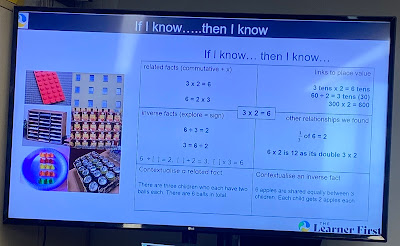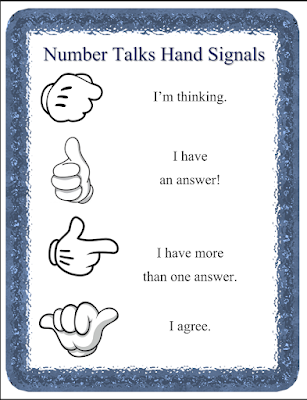Engagement Norms
Any questions should be answered in full sentences.
- No hands up, all are expected to participate.
- Multiple choice - ranking 1 -4
- Yes/No - Thumbs up/down but fist to tummy so it's not distracting for others.
- Pair share. As tell Bs, then swap.
- Container with rākau, pull one out with child's name on it. 'Warm Call.'
- It's a 'Cold Call' if you ask the pātai then immediately ask a child.
- Writing on their whiteboards or in their books
- Track with me - point to the words as teacher reads
- Read with me - aloud.
The Science of Reading
- 40-50 years of research.
- Comes from linguistics, neuroscience, cognitive psychology, education
- Every human learns to read the same away, some just take longer than others.
- Kinaesthetic learners, visual learners = rubbish.
- The Simple View of Reading (1986 Gough & Tumner) = how reading occurs in the brain. WORD RECOGNITION x LANGUAGE COMPREHENSION = READING COMPREHENSION. Word recognition means lifting the words off the page.
Rosenshine Principles of Instruction- Review prior leaning. Always start with a quick recap.
- Small steps. Introduce new material gradually to avoid overload.
- Ask questions. Frequently to check for understanding.
- Provide models - effective teachers provide many opportunities/solutions.
- Guide the Practice - Help them as they practice.
- Check for understanding - always along the way
- Aim for high success - 80% of the group (these guys say class) need to be feeling comfortable before we move on.
- Scaffold tasks. Break tasks in smaller manageable tasks.
- Encourage independence - faster fluency and automaticity through practice.
- Regular review - not only from last week, but last month, last year.
Rethink the way we question tamariki
Have you understood VS What have you understood?
Who can remember what we learned VS Let's review what we learned yesterday
What have the children learned today? VS Has my teaching been successful today?
Principles of Structured Literacy
- Systematic - Follow a scope and sequence
- Cumulative - Follow a scope and sequence
- Explicit - simple and direct so we reduce cognitive load.
- Diagnostic - monitoring all the time and being responsive to our tamariki.
Reading + Spelling + Writing + Oral Language/Vocab/Background Knowledge
Assessment (universal screenings, diagnostic, progress screening)
Science of Cognitive Load Theory
Ideas can not be generated if kids are feeling overload from inability to form letters, hold an idea in their head, hold the pen correctly etc... There is too much going on the their working memory.
We need to shift as much as we can into automaticity.
Mastery frees up space in the working memory!
Extraneous load - any thing that draws attention away from the learning.
Intrinsic load - anything that help me hold on to that learning.
Implications
- Be clear about what we want the students to learn.
- Teach systematically and cumulatively
- Be direct and explicit - cut out redundant information
- Give worked examples - modelling
- Daily review and retrieval practice
- Predictable routines with low variance
- Checking for understanding
Attributes of explicit instruction = Interactive - Feedback - Perky Pace
The Forgetting Curve
The original Forgetting Curve was derived in the 1880s by the German psychologist Hermann Ebbinghaus
Review
Decoding - write up homonyms eg. write right. Say sentences, children have to show you 1 or 2, eg. "I write my name" 1 or 2.
Encode - "what 2 letters spell the /ur/ in burn?" Write 'burn' "Now write 'turning'
Which 2 letters make the /au/ sound in 'sauce'? Now write 'automatic'
Which 2 letters make the /aw/ sound in 'draw'. Now write 'draw' Now write 'lawn'
Which 3 letters make the /ch/ sound in 'catch' Now write 'latch'. Now write 'fetching'
Share a sentence - I am going to say a sentence with 'hear' in it. How do we write 'hear' H - E- A -R. "I hear you are having a sleepover in the weekend" Write 'here'
At the end, read through all the word across the columns
New Learning
/-dge/ (List 37 The Code) - Straight after a short vowel sound in a 1 syllable word.
Say out loud.The sound is ... The spelling is ...
eg. 'fugde'
Clap the word. Is it 1 syllable? Yes. pull out the phonemes, f-u-j. Is the /j/ straight after the short vowel? Yes. So we use the /dge/ spelling.
eg. 'cringe'
Clap the word. Is it 1 syllable? Yes. pull out the phonemes, c - r - i - n - j. Is the /j/ straight after the short vowel? No! So we use /ge/
Practice
Now a list down your page.
"My word is hedge. The bird sat on the hedge. ... Say 'hedge'. What are the phonemes? Write the word. put a dot under the short vowel and underline the 'dge'" Sound and write.
My word is badge. The Policeman had a shiny badge. Say 'badge' What are the phonemes? Write the word. put a dot under the short vowel and underline the 'dge'" Sound and write
Repeat with ridge, dodge...
Put your pens down. Put your finger on the top of the list. We are going to read down our list.
What's the spelling? /dge/ what's the spelling? 'd-g-e'
Dictation
Say to me I like fudge. Say it to a buddy. Say it to me again. Write it down. Don't forget capital letters, full stops, finger spaces. Underline the /dge/.
Repeat with - They can trudge over the bridge.
Repeat with - Mum put a wedge of fudge in the big fridge.
Put your finger by the sentence.
Read it.
Spell the word.
Tick it or fix it.
Lots of repeating throughout - "What's the sound? What's the spelling? Straight after a short vowel sound in a 1 syllable word!"
Appositives
An appositive is a noun phrase that comes after another noun phrase (its antecedent) to provide extra information about it. It sits between 2 commas.
Example
Mrs Jones, my teacher, lives by the river.
Non-example
My teacher, who lives by the river, is Mrs Jones.
This sentence contains an embedded clause and does not give more information about the noun.
Give 2 sentences to kids. They need to merge into an appositive.
Fluency buddies - Partner a reads first while partner b is tracking. Swap. Might be a paragraph.
Example for Stage 6
Review
phonemes - short vowels, floss, some not all
word cards - flip through some words
Tell them the pattern we're learning - new sound - /sh/
The sound is...
The letters are...
Practising writing across the page - say the letters s-h, say 'sh'
Read some words with that pattern. You can use a book with words in the back. or SL site.
Slow read - hear all the phonemes
Fast read - for automaticity
Write 4 words - word ladders. Read up and and down the ladder. Use 'Grab and Read' cards.
Learning is not a Spectator Sport - Dr Anita Archer
The Essentials of Active Participation
- Request frequent responses from students. Effective teachers generally provide 3-5 opportunities to respond per minute. Eg. unison choral responses, gestures, response cards. If on a whiteboard - 1 per minute.
- Overt repsonses - say, write, do. In all lessons.
- Involve all students. Everyone needs to be doing everything to show their understanding.
- Structure the active participation procedure. Intentional, structured, planned, and consistently implemented.
Repeated reading is one of the best strategies for improving fluency.
3 readings is ideal.
My takeaways
- Stop putting hands up
- Keen to hear more about small group compared to whole class teaching - listen to Kate's PODCAST!
- Don't forget to use - The Syntax Project









































